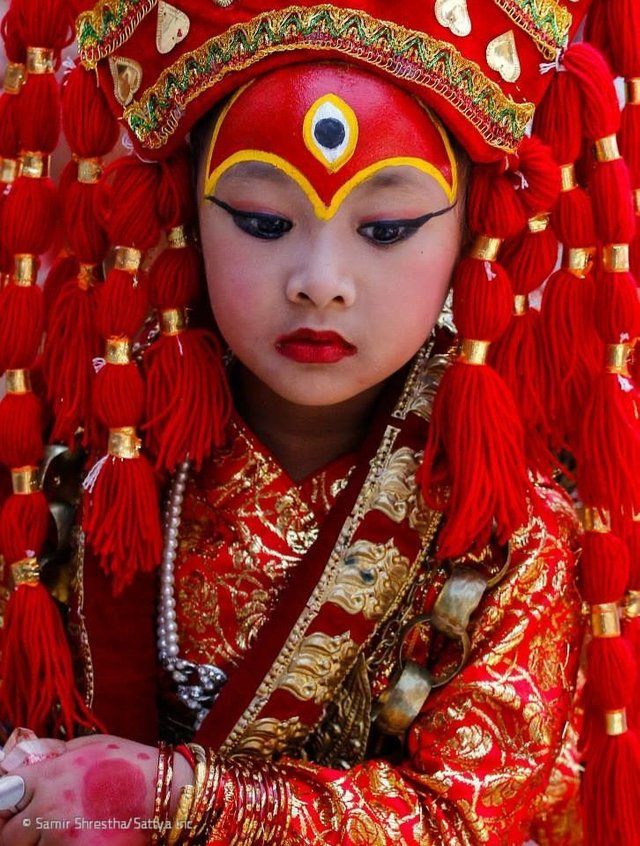
The Kumari is a revered tradition in Nepal, where a young prepubescent girl is selected to become a living goddess. Chosen based on specific criteria, such as physical attributes and astrological signs, the Kumari is believed to be the earthly incarnation of the Hindu goddess Taleju. She resides in the Kumari Ghar, a palace in Kathmandu, where she is worshipped by devotees who seek her blessings.
The Kumari is adorned in elaborate traditional attire and makeup, often wearing a red dress and a crown. She is carried in a palanquin during religious processions and festivals, where she blesses the devotees by simply being present.
Despite her divine status, the Kumari lives a secluded life, with strict rules and rituals governing her daily activities. She is not allowed to leave the Kumari Ghar except for ceremonial occasions and must follow various taboos, such as not touching the ground with her feet.
The selection process for the Kumari is rigorous and involves various rituals, including testing the candidate's fearlessness by placing her in a dark room filled with masks and costumes to see her reaction. Once selected, the Kumari serves until she reaches puberty or loses blood from an injury, at which point she returns to an ordinary life, and a new Kumari is chosen.
The tradition of the Kumari has faced criticism in modern times for its perceived infringement on the rights of the girls selected and for perpetuating outdated gender roles. However, it remains an integral part of Nepali culture and religion, attracting both reverence and curiosity from people around the world.
The Kumari is a revered tradition in Nepal, where a young prepubescent girl is selected to become a living goddess. Chosen based on specific criteria, such as physical attributes and astrological signs, the Kumari is believed to be the earthly incarnation of the Hindu goddess Taleju. She resides in the Kumari Ghar, a palace in Kathmandu, where she is worshipped by devotees who seek her blessings.
The Kumari is adorned in elaborate traditional attire and makeup, often wearing a red dress and a crown. She is carried in a palanquin during religious processions and festivals, where she blesses the devotees by simply being present.
Despite her divine status, the Kumari lives a secluded life, with strict rules and rituals governing her daily activities. She is not allowed to leave the Kumari Ghar except for ceremonial occasions and must follow various taboos, such as not touching the ground with her feet.
The selection process for the Kumari is rigorous and involves various rituals, including testing the candidate's fearlessness by placing her in a dark room filled with masks and costumes to see her reaction. Once selected, the Kumari serves until she reaches puberty or loses blood from an injury, at which point she returns to an ordinary life, and a new Kumari is chosen.
The tradition of the Kumari has faced criticism in modern times for its perceived infringement on the rights of the girls selected and for perpetuating outdated gender roles. However, it remains an integral part of Nepali culture and religion, attracting both reverence and curiosity from people around the world.
.jpg)
Congratulations, your post has been upvoted by @upex with a 0.12% upvote. We invite you to continue producing quality content and join our Discord community here. Keep up the good work! #upex
Downvoting a post can decrease pending rewards and make it less visible. Common reasons:
Submit